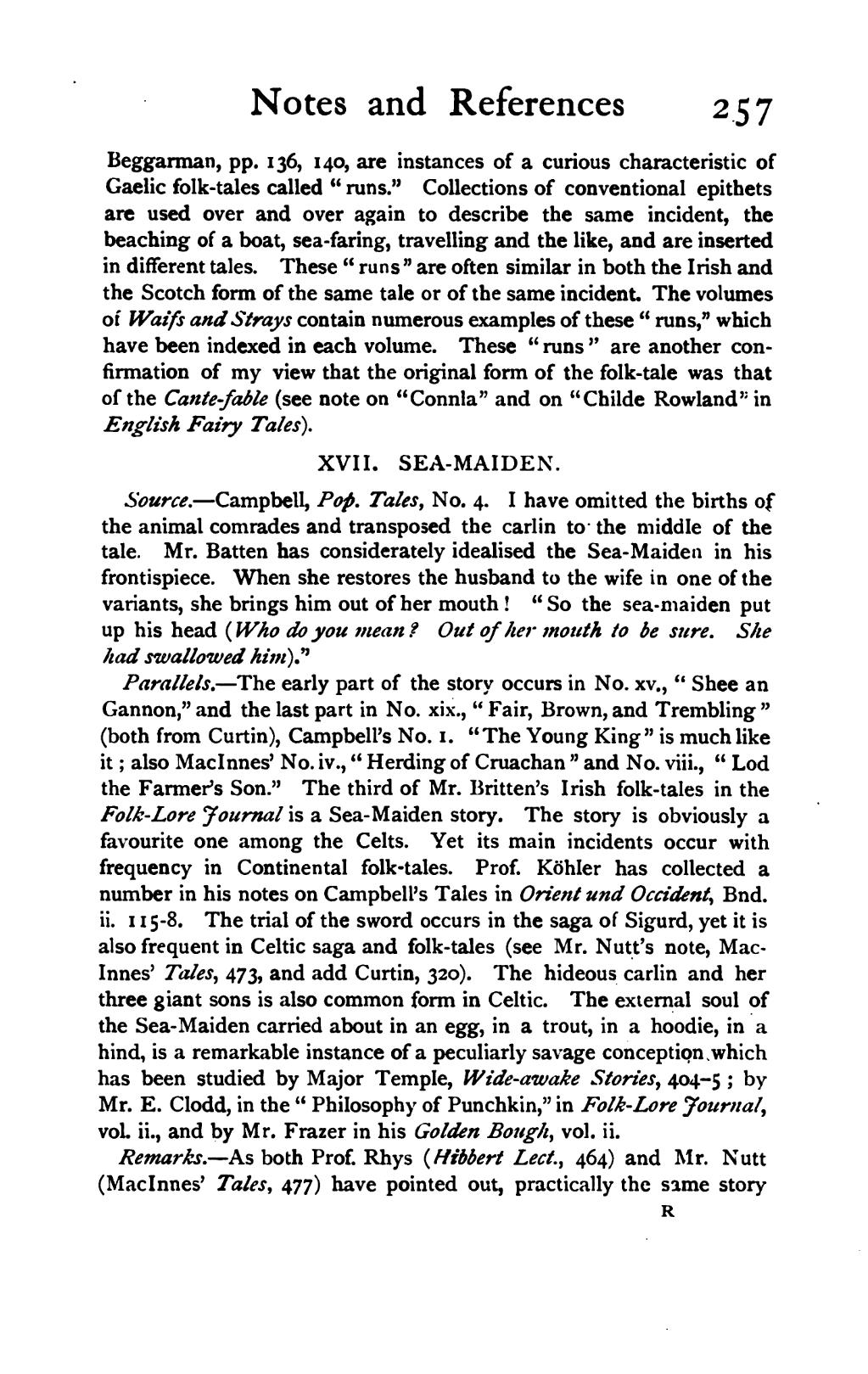Beggarman, pp. 136, 140, are instances of a curious characteristic of Gaelic folk-tales called "runs." Collections of conventional epithets are used over and over again to describe the same incident, the beaching of a boat, sea-faring, travelling and the like, and are inserted in different tales. These "runs" are often similar in both the Irish and the Scotch form of the same tale or of the same incident. The volumes of Waifs and Strays contain numerous examples of these "runs," which have been indexed in each volume. These "runs" are another confirmation of my view that the original form of the folk-tale was that of the Cante-fable (see note on "Connla" and on "Childe Rowland" in English Fairy Tales).
XVII. SEA-MAIDEN.
Source.—Campbell, Pop. Tales, No. 4. I have omitted the births of the animal comrades and transposed the carlin to the middle of the tale. Mr. Batten has considerately idealised the Sea-Maiden in his frontispiece. When she restores the husband to the wife in one of the variants, she brings him out of her mouth! "So the sea-maiden put up his head (Who do you mean? Out of her mouth to be sure. She had swallowed him)."
Parallels.—The early part of the story occurs in No. xv., "Shee an Gannon," and the last part in No. xix., "Fair, Brown, and Trembling" (both from Curtin), Campbell's No. 1. "The Young King" is much like it; also MacInnes' No. iv., "Herding of Cruachan" and No. viii., "Lod the Farmer's Son." The third of Mr. Britten's Irish folk-tales in the Folk-Lore Journal is a Sea-Maiden story. The story is obviously a favourite one among the Celts. Yet its main incidents occur with frequency in Continental folk-tales. Prof. Köhler has collected a number in his notes on Campbell's Tales in Orient und Occident, Bnd. ii. 115–8. The trial of the sword occurs in the saga of Sigurd, yet it is also frequent in Celtic saga and folk-tales (see Mr. Nutt's note, MacInnes' Tales, 473, and add Curtin, 320). The hideous carlin and her three giant sons is also common form in Celtic. The external soul of the Sea-Maiden carried about in an egg, in a trout, in a hoodie, in a hind, is a remarkable instance of a peculiarly savage conception. which has been studied by Major Temple, Wide-awake Stories, 404–5; by Mr. E. Clodd, in the "Philosophy of Punchkin," in Folk-Lore Journal, vol. ii., and by Mr. Frazer in his Golden Bough, vol. ii.
Remarks.—As both Prof. Rhys (Hibbert Lect., 464) and Mr. Nutt (MacInnes' Tales, 477) have pointed out, practically the same story
